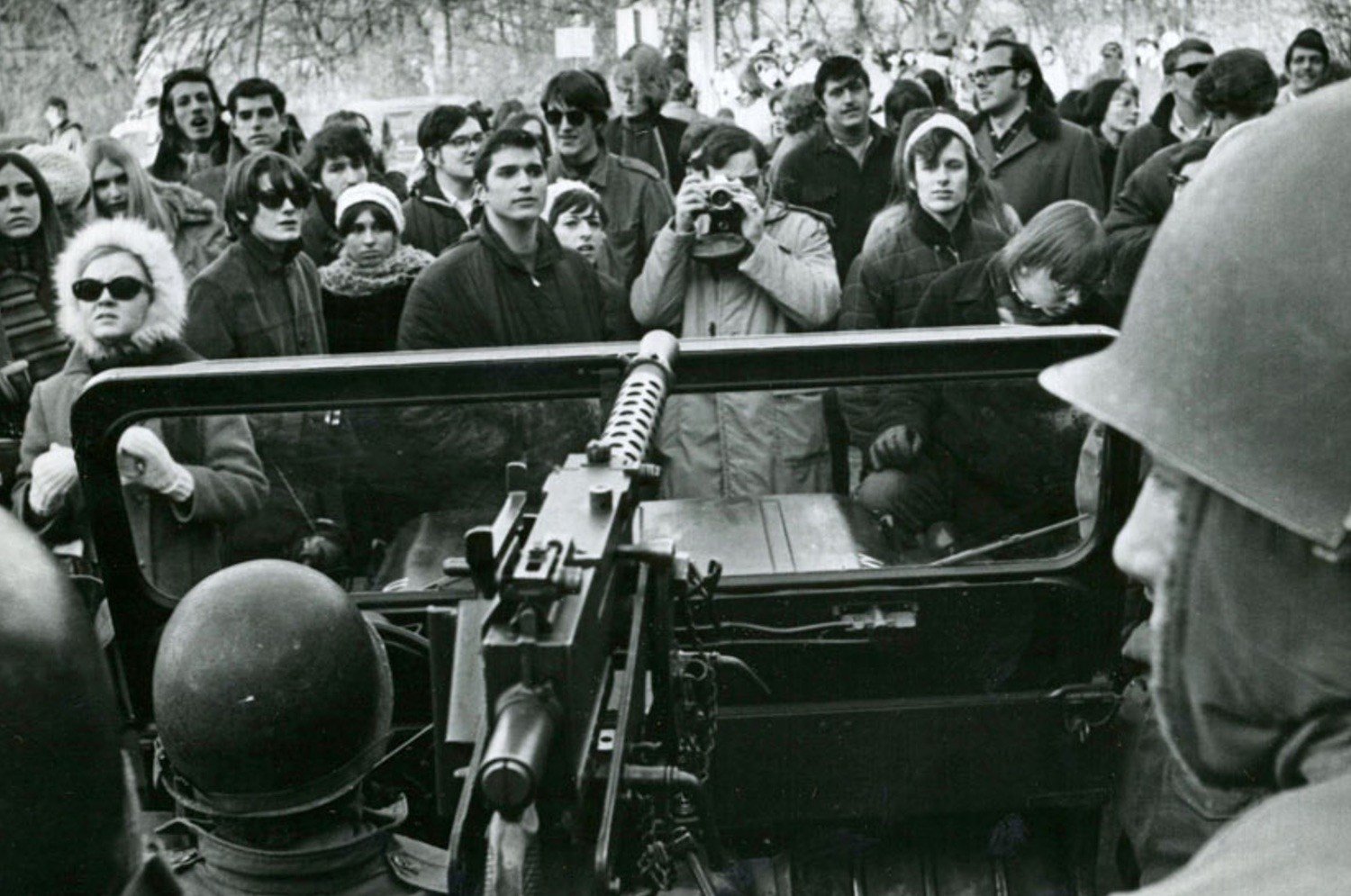Madison, Wisconsin. The year is 1963. The camera pans down idyllic suburban avenues, the American Dream seemingly present in all its facets. Yet in the midst of the Vietnam War, it’s clear there’s something deeply troubling just under the surface. Napalm flames Vietnamese jungles to the soft chords of Bob Marley; later, montages of police macing crowds of protesters create unsettling effects. Nominated for an Academy Award and re-released in theaters, this is the America that “The War at Home” (1979) presents to us. Centered around the Vietnam War protests at the University of Wisconsin, directors Glenn Silber and Barry Alexander Brown provide a far more intimate look at the domestic conflict that rocked the U.S. Their film demonstrates that “the war at home” consisted of more than just burning draft cards.
“The War at Home” is able to dive deep into the trials and tribulations of the student protests at the University of Wisconsin. The film vividly transports us back to the past with clips of daily American life, memorable quotes from prominent public figures and a musical score chock-full of 1960s hits. Silber and Brown lead us along the slow burn of events that culminated in the bombing of a research center. This horrific event left a student dead. Emotion and tension run red-hot throughout. As informative as it is dramatic, it’s a worthwhile watch for anyone who’s looking to blast back to that contentious era.
Despite being released decades before many of us were born, the message the documentary carries is still just as relevant today as it was then. Many scenes of protest are all too familiar a sight; the black-and-white film doesn’t alienate present audiences from the myriad of protestors carrying signs decrying fascism or the decline of free speech on college campuses. Great care and detail is channeled into documenting the reaction of the authorities to the protests, with police gradually equipping themselves with gear that appears to be better suited for the war abroad. The film does an impressive job of getting both sides of the story from the people who lived it firsthand, from the chief of police to the student later convicted of the bombing that rocked the school. It makes crystal-clear that these still-topical issues didn’t materialize out of nowhere – they were a long time coming before they finally boiled over. Directors Silber and Brown refuse to let us believe that these factors are purely constrained to the 1960s; they were pervasive in the past and will continue to be so in the future.
However, “The War at Home” does have a tendency to harp on that point a bit too much, on the verge of redundancy. With a runtime of 100 minutes, the key plot points and nuances of the protests could have been covered in 60. The climactic main point is made about halfway through; from there, it’s a matter of riding that wave until the film finishes its timeline of events. This doesn’t necessarily diminish the film’s qualities, just merely stretches them thin. The long-winded experience is still invaluable, especially to anyone looking to learn more about a time period they never saw.
In all, “The War at Home” is a meticulously crafted story about those who question those in power, even at great cost to themselves. It’s not just a story of protesters, but also their setbacks, strife and, most of all, their diligence. The film discusses all of these qualities, ensures none of them eclipses another, and does each its due justice. “The War at Home” remains a poignant reminder of struggle that has yet to diminish in value. It is especially relevant today since protests remain prevalent. For a future generation of activists, “The War at Home” provides the impetus to get started, and leaves them on a haunting note: “It is you, most of all, who the world will be watching.”
Contact Hannah Blum at hannahbl ‘at’ stanford.edu.
